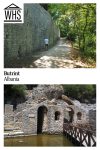Butrint
By Rachel Heller
What is Butrint?
Butrint is an archeological site in the south of Albania. It holds ruins from several periods of occupation, with the earliest remains date to 50,000 BC. It was influenced by the ancient Greeks until the Romans arrived in 44 BC and colonized it. In the 400s AD, it was an Episcopal center, so Christian structures replaced the Roman. It was taken over and rebuilt by the Byzantine Empire in the 9th century, then came under Angevin and then Venetian rule in 1387.
Disclosure: This article contains affiliate links. Making a purchase through an affiliate link will mean a small commission for this website. This will not affect your price. Privacy policy.
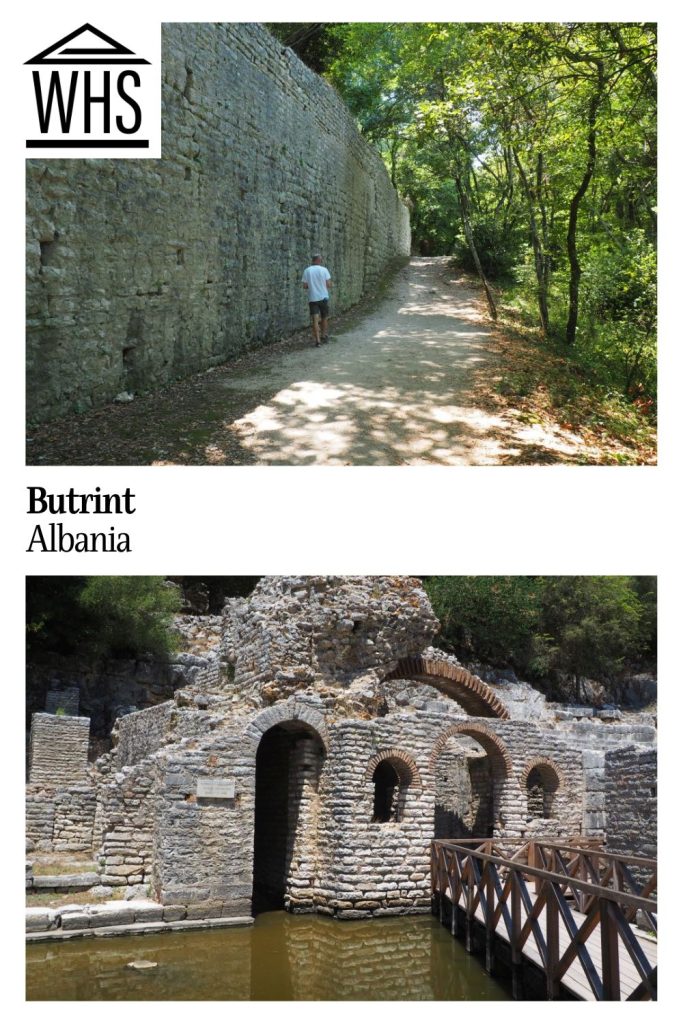
Save to Pinterest for future reference.
The Venetians were constantly at war with the Ottoman Empire, which wanted Butrint as a stepping stone to Corfu, so Butrint changed hands several times between the two. The Venetians built the Triangular Fortress to help them defend Butrint. However, the site was gradually abandoned despite their defensive measures and eventually the Venetians ceded it to Napoleon Bonaparte in 1797.
Besides the fortress, the ruins include many buildings from a range of historical periods. A protected natural area – a national park – surrounds the site, buffering it from urban encroachment.
Why is Butrint a UNESCO World Heritage site?
According to UNESCO, the site “provides valuable evidence of ancient and medieval civilizations on the territory of modern Albania.” Because the city was abandoned as marshlands spread, what was left of it was untouched.
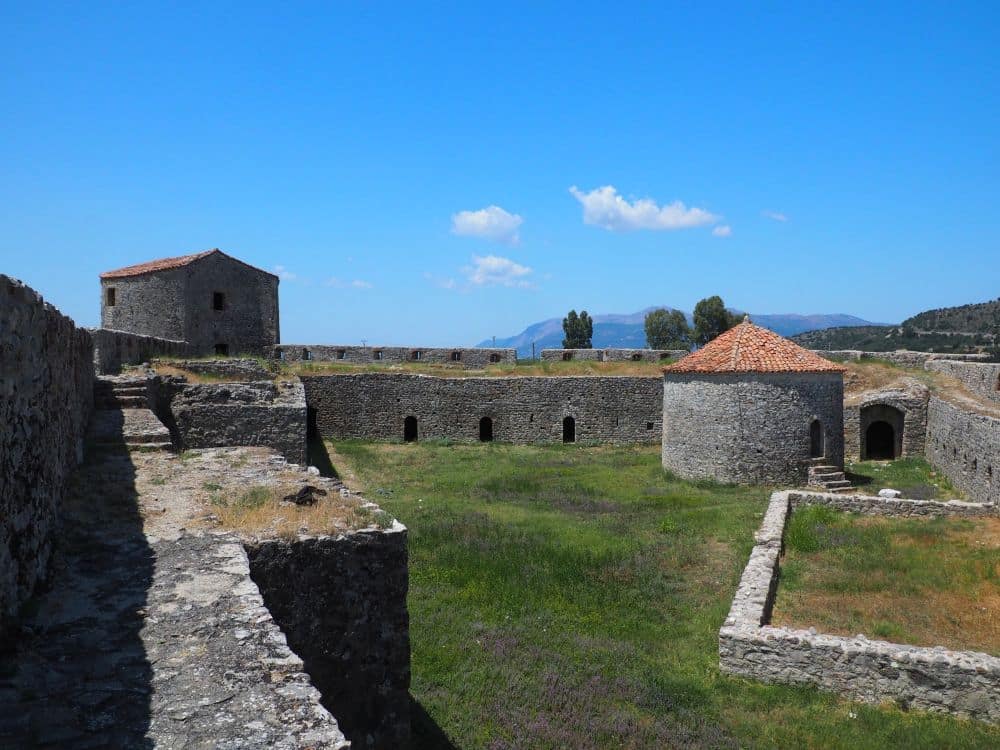
What can you expect on a visit to Butrint?
Most of the site is on a peninsula on the mainland opposite Corfu, at the very southern tip of Albania. The Venetian fortress is across a narrow strait opposite the site. If you’re arriving from the south, you’ll get to the fortress first, taking a small ferry across the strait to see the rest – vice-versa if you arrive from the north.
The fortress, dating to the late 15th century, is remarkably simple. The walls are thick and appear to be infilled with rubble, but they have no crenellations and very simple windows and doorways. The large blockhouse was added in the 16th century. Visitors can wander the fortress freely, including climbing the walls and, apparently, leaving their litter everywhere. There is no admission fee for the fortress.
The main site, across the channel, is more organized and requires an entrance fee. It comprises 24 different elements, including two Roman bathhouses, a Sanctuary dedicated to Asclepius, a theater, a palace, a baptistery, various gates and walls, and so on. They’re mostly well-marked and tree-shaded, making it a pleasant place to wander once you’ve paid your admission. There’s also a small museum.
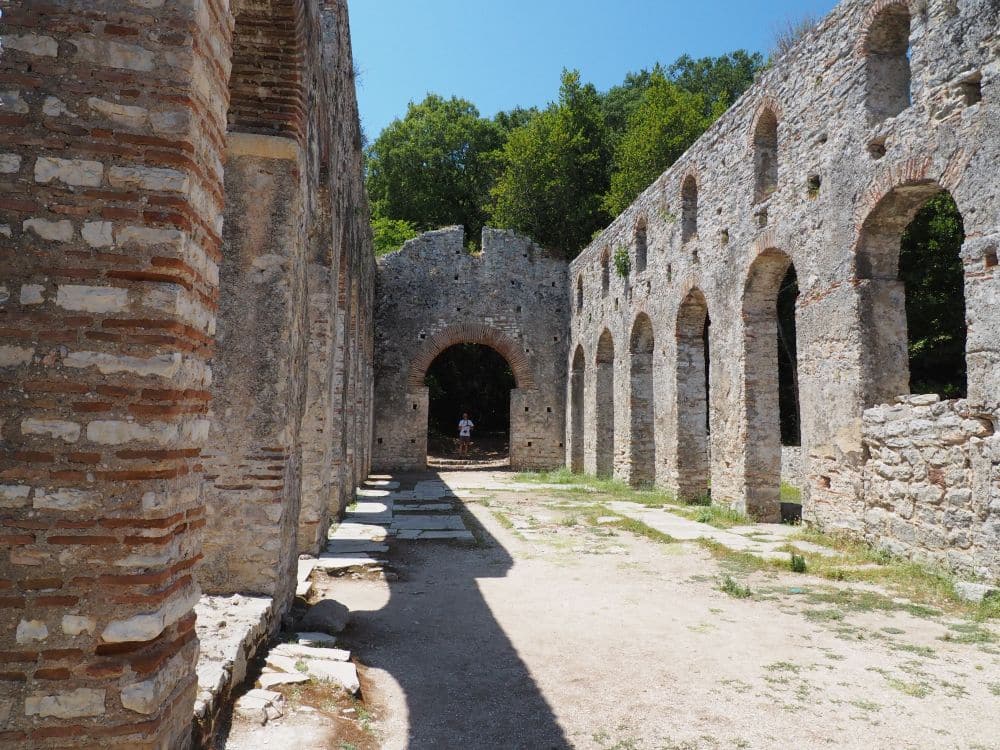
Is Butrint worth visiting?
If you’re on your way out of Albania into Greece or vice-versa as we were, then it’s worth an hour or two’s stop. I would not say it’s worth going out of your way to see. There are more impressive ruins from the same periods in other places: Ephesus in Turkiye, for example, or Baalbek in Lebanon, Split in Croatia, or many places in Italy or Greece.

What sorts of travelers would like Butrint?
This one is for real history and architecture geeks. Children would not find it interesting for long, though they might enjoy clambering on the walls of the fortress. While it isn’t particularly set up for wheelchairs – the paths are dirt – at least parts of it would be accessible with some help.
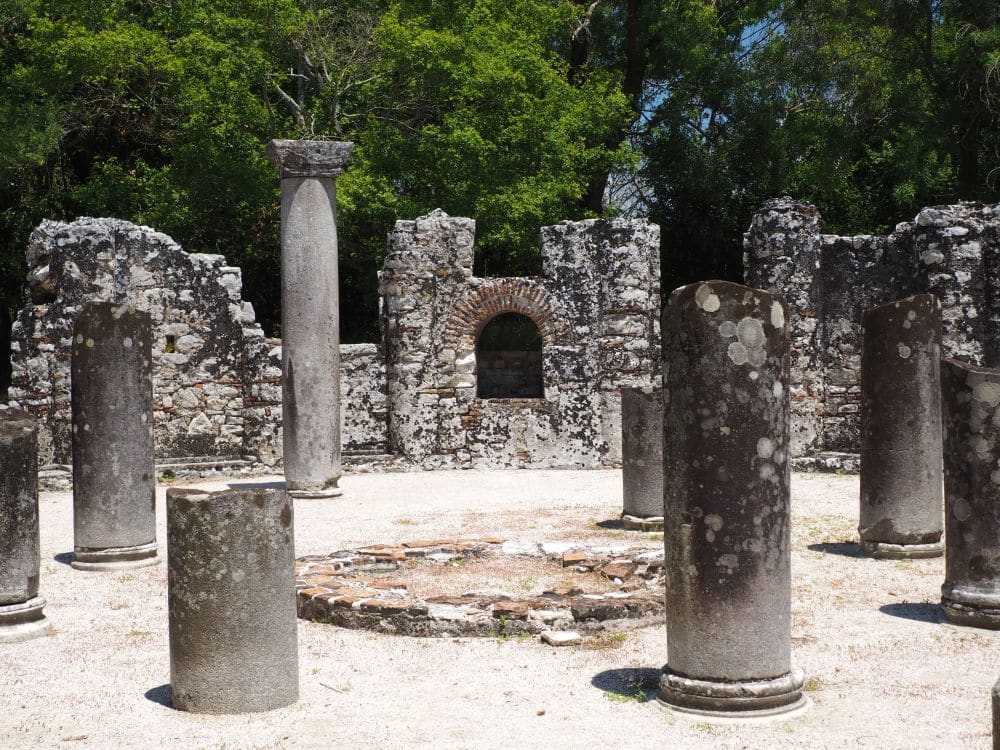
Tips for visiting Butrint
There are no services inside the site, but there are restaurants nearby where you can use the toilets and buy food. Bring water and wear sunscreen if you’re visiting in the summer.
Just down the road from the site, opposite the bus stop, is the Hotel Livia. We had a pleasant meal there after viewing the site, and it looks from its reviews like a decent place to spend the night as well. As you can see on the map below, other hotels are further away:
The ferry – more like a raft – across the channel between the Venetian fortress and the rest of the site is very small but takes a few cars at a time. Only take your car, though, if you’re traveling on. There’s parking on both sides, so if you’re going to be turning around and going back, just leave your car and walk onto the ferry.
Where is Butrint?
Butrint is on the south coast of Albania just opposite the island of Corfu. By far the easiest way to get there – or anywhere in Albania – is by driving.
Rent a car from the Tirana airport or anywhere in Albania.
- From the coastal city of Vlorë it’ll take about two hours and 45 minutes to drive to Butrint.
- From Tirana, Albania, the drive is about four hours.
- If you’re traveling from Greece, it’s about two and a half hours’ drive from Ioannina in northern Greece.
- From Corfu you can take a ferry from Corfu city to Saranda on the Albanian coast and drive south to Butrint. This route will take two and a half hours if you time the ferry well.
It’ll take you longer if you’re going to use public transportation in Albania. There is a bus line that runs from Salanda to the end of the line at Butrint. The bus stop is just before the end of the road, so just walk a few minutes further from there to get to the UNESCO site.
Alternatively, take a tour to Butrint from Corfu, Saranda or Tirana:
For more information about Butrint, its opening hours and admission fees, see its official website (in Albanian so use Google Translate).
Have you been to Butrint, Albania? If so, do you have any additional information or advice about this UNESCO World Heritage site? Please add your comments below!

